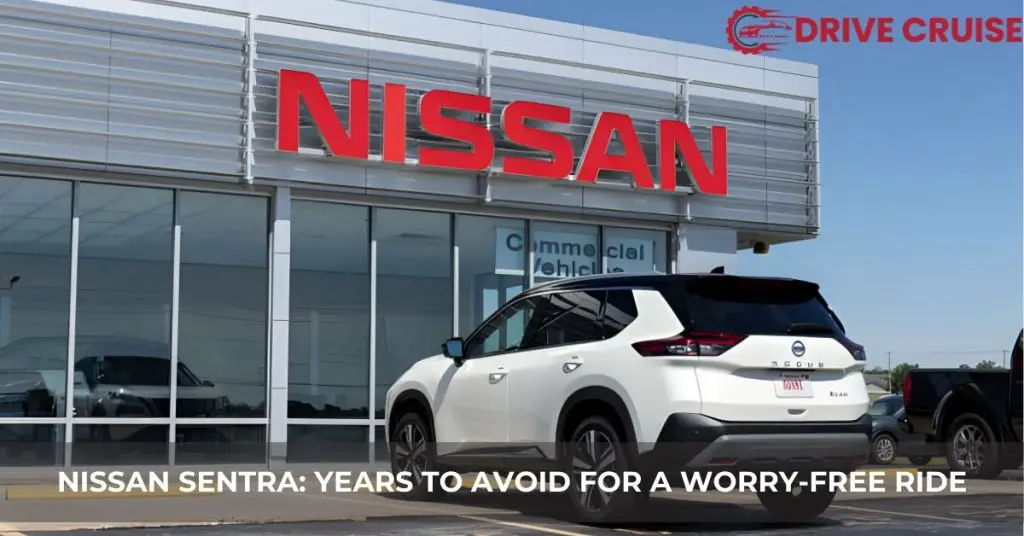When shopping for a used car, we all want to find that perfect blend of reliability, performance, and value. The Nissan Sentra, with its long history as a popular compact sedan, often finds its way onto our shortlists. However, not all Sentras are created equal, and there are certain years we’re better off steering clear of.
We’ve done the legwork to dive into the Sentra’s history, pinpointing those specific models that might give us more headaches than miles. It’s not just about avoiding a lemon; it’s about making an informed decision that ensures we’re getting the best bang for our buck. So, let’s get started on uncovering which Nissan Sentra years we should avoid and why it’s crucial to keep these in mind during our search.
Understanding the Nissan Sentra: An Overview
Moving on from the significance of identifying specific years of the Nissan Sentra to avoid, it’s essential to dive into understanding the car itself. The Nissan Sentra stands out as a compact car that has been part of Nissan’s lineup since 1982. Through its numerous generations, the Sentra has evolved significantly, adapting to changing tastes and technologies in the automotive industry.
Initially, the Sentra was praised for its fuel efficiency, affordability, and reliability. Over the years, it transitioned from a subcompact to a compact car, with newer models offering more space, comfort, and a range of technologically advanced features. This has included updates in safety features, such as the inclusion of automatic emergency braking and a rearview camera as standard equipment in newer models.
Moreover, throughout its production history, the Sentra has offered various engine options, ranging from efficient four-cylinder engines to more powerful options in select trim levels. This variety has allowed buyers to choose a Sentra that best matches their performance needs and fuel economy preferences.
Despite its many positive attributes, like any vehicle, the Sentra has had its share of issues and recalls over certain years. Problems have ranged from minor inconveniences to more significant issues affecting the car’s safety and performance. It’s these specific years and associated problems that we’re aiming to highlight, ensuring potential buyers can make an informed decision.
Understanding the evolution, features, and issues of the Nissan Sentra is crucial for anyone considering purchasing this vehicle. By being informed about its history and the variations across different model years, buyers can better identify the years to avoid and focus on those that offer the best value and reliability.
Nissan Sentra Years to Avoid
Building on our understanding of the Nissan Sentra’s evolution and the importance of identifying models with potential issues, we delve into the specific years of the Nissan Sentra that potential buyers should consider avoiding. Our research, based on recall data, consumer reports, and reliable automotive resources, highlights the Nissan Sentra years that have been notorious for issues, ensuring buyers can make a well-informed decision.
- 2012 Nissan Sentra: This year marked a substantial number of complaints related to the transmission, including failures and erratic shifting behaviors that often resulted in costly repairs.
- 2013 Nissan Sentra: Owners of the 2013 model reported problems with the CVT transmission, which proved to be a recurring theme in the Sentra’s history. Additionally, issues with the braking system and fuel system were reported, leading to several recalls.
- 2014 Nissan Sentra: Similar to its predecessor, the 2014 Sentra faced significant transmission issues, alongside complaints about poor interior accessory quality and electrical problems that affected the usability of the vehicle.
- 2015 Nissan Sentra: This year continued to see transmission problems, with a high number of reports concerning CVT failure. It also had issues with the steering system that could compromise the driver’s control over the vehicle.
- 2017 Nissan Sentra: Steering problems persisted in the 2017 model, alongside troubles with the air conditioning system, which could diminish the driving experience, especially in warmer climates.
Our analysis reveals that while the Nissan Sentra offers commendable features like enhanced space, comfort, and advanced technologies, certain years have been plagued by recurring issues. Potential buyers should exercise caution and consider steering clear of these models or thoroughly inspecting them and reviewing their service history if they’re considering a purchase. By avoiding these specific years, buyers increase their chances of acquiring a reliable and trouble-free Nissan Sentra.
Factors Leading to Problematic Years
Understanding the factors contributing to problematic years of the Nissan Sentra enables us to make an informed decision when considering a used model. Several key issues have led to certain models being less reliable than others.
- Transmission Failures: A significant factor has been the continuity of transmission problems, especially in the Continuously Variable Transmissions (CVTs) used in various years. The 2012 to 2014 models have been particularly notorious for this issue, leading to costly repairs and replacements for owners.
- Braking System Issues: Faulty braking systems have also been a concern, with reports of brakes failing to perform as expected. This has raised safety concerns, particularly in the 2013 and 2014 models, making them risky choices for potential buyers.
- Electrical Problems: Electrical malfunctions, including issues with the car’s computer system and battery failures, have plagued certain Sentra years. Owners of the 2015 and 2017 models have reported such problems, indicating a need to thoroughly inspect these areas before making a purchase.
- Steering Defects: Compromised steering components have led to recalls and complaints from drivers, especially in the 2013 model. Problems ranged from difficulty in steering to complete loss of steering control, posing significant safety risks.
- Engine Concerns: Engine performance issues, including unexpected shutdowns and loss of power while driving, have been noted, particularly in the 2012 and 2014 models. These engine concerns add to the reasons some years of the Nissan Sentra are best avoided.
By acknowledging these factors, we can steer clear of models that might be more trouble than they’re worth. It’s crucial to research and inspect used Sentras thoroughly, focusing on these known issues, to ensure a reliable and safe vehicle purchase.
How to Choose a Reliable Nissan Sentra
Choosing a reliable Nissan Sentra involves several steps, each designed to ensure you get a car that serves you well over time. Given our understanding of certain years to avoid, let’s delve into how we can identify the best Nissan Sentra models that promise reliability and satisfaction.
Inspect Vehicle History
A thorough inspection of the vehicle’s history is paramount. We recommend obtaining a detailed report from services like CarFax or AutoCheck. These reports reveal vital information about prior accidents, service records, and previous ownership. If a Nissan Sentra has a clean history with regular maintenance records, it’s a good sign of a well-taken-care-of vehicle.
Prioritize Low Mileage
Models with lower mileage often indicate less wear and tear. When selecting a Nissan Sentra, aim for cars with lower miles on the odometer. This strategy increases the chances of the vehicle having a longer lifespan and potentially fewer mechanical issues.
Check for Recalls and Service Bulletins
Stay informed about any recalls or service bulletins issued for the model year you’re interested in. Manufacturers will repair these issues at no cost to you, even if the car is out of warranty. Nissan’s official website or the National Highway Traffic Safety Administration (NHTSA) can provide this information. A model with few to no recalls signals better overall reliability.
Test Drive and Inspection
Never underestimate the power of a test drive. It’s the most effective way to gauge a car’s condition. Listen for unusual noises and pay attention to the handling, braking, and transmission performance. Afterward, it’s wise to have a trusted mechanic inspect the Sentra, especially focusing on known problem areas like the transmission, braking system, and electronics.
Seek Out Reputable Sellers
Finally, purchasing from a reputable seller can significantly enhance the likelihood of obtaining a reliable Nissan Sentra. Whether it’s a certified pre-owned vehicle from a Nissan dealership or a trusted independent dealer with strong reviews, the reputation of the seller can offer additional peace of mind.
By following these steps, we put ourselves in a great position to select a Nissan Sentra that’s not just reliable, but also a joy to drive for years to come.
Conclusion
Armed with the knowledge of which Nissan Sentra years to steer clear of and the steps to choose a dependable model, we’re on the right path to making a smart purchase. It’s all about doing our homework and not rushing into a decision. Let’s remember to check that vehicle history, prioritize models with lower mileage, stay alert for any recalls, and always, always take it for a test drive. By following these guidelines, we’re not just buying a car; we’re investing in our peace of mind and future happiness on the road. Here’s to finding a Nissan Sentra that’s as reliable as it is enjoyable to drive!
Related Posts:
- 7.3 Powerstroke Years to Avoid: A Comprehensive Guide for Truck Enthusiasts
- Can You Go to Jail for Slashing Tires: Vandalism Laws and Penalties
- Michelin CrossClimate 2 vs. Michelin Defender T+H: Your Guide to Michelin All-Season Tires
- Michelin Defender 2 vs. CrossClimate 2: All-Season Showdown for Everyday Drivers
- Nissan Sentra Years to Avoid: A Comprehensive Buyer’s Guide
- Sumitomo Encounter AT vs. Falken Wildpeak AT3W: An Off-Road Showdown for Budget-Minded Adventurers“
- Sumitomo vs Michelin Tires: Which One Should You Choose?
- Toyota Charging System Malfunction: Causes and Solutions
- What Does SR Stand for Nissan: Unveiling the Trim Level Meaning
- Yokohama Geolandar AT G015 vs. Falken Wildpeak AT3W: The Ultimate All-Terrain Showdown









